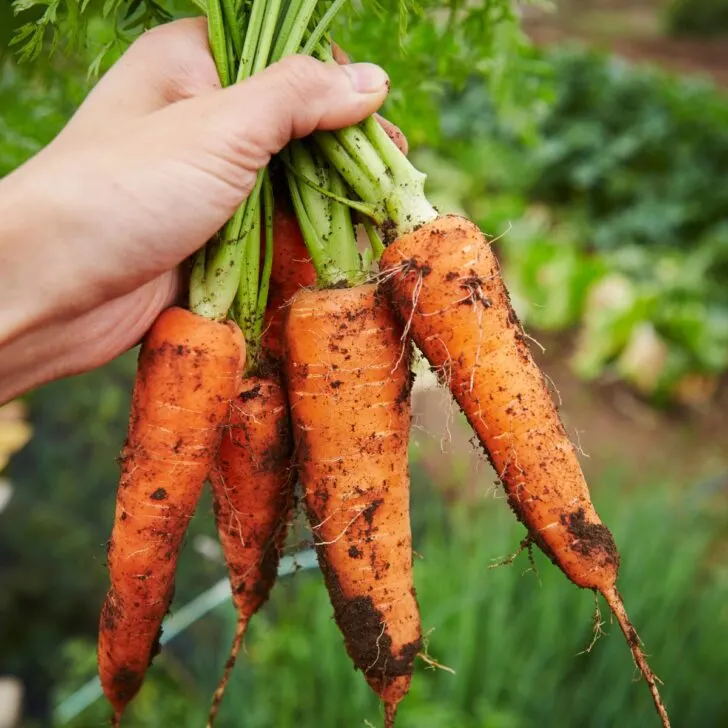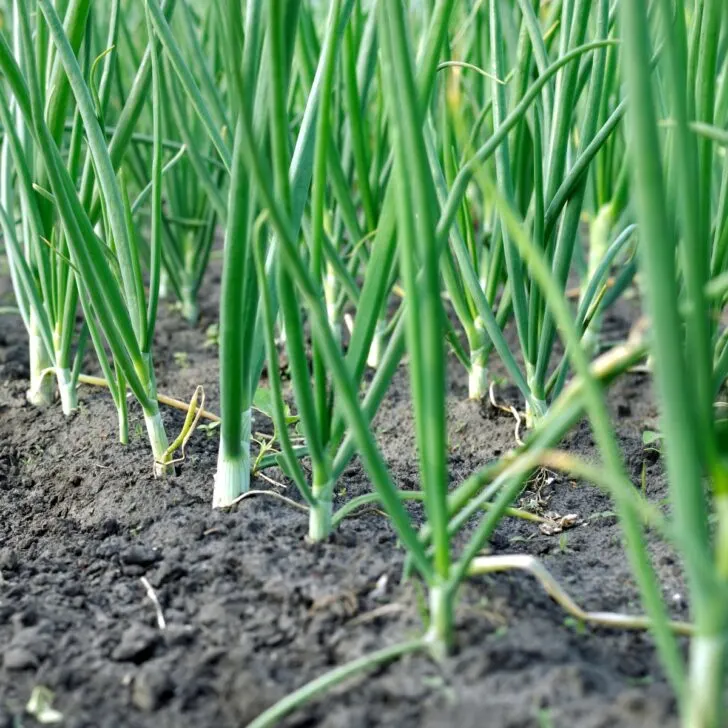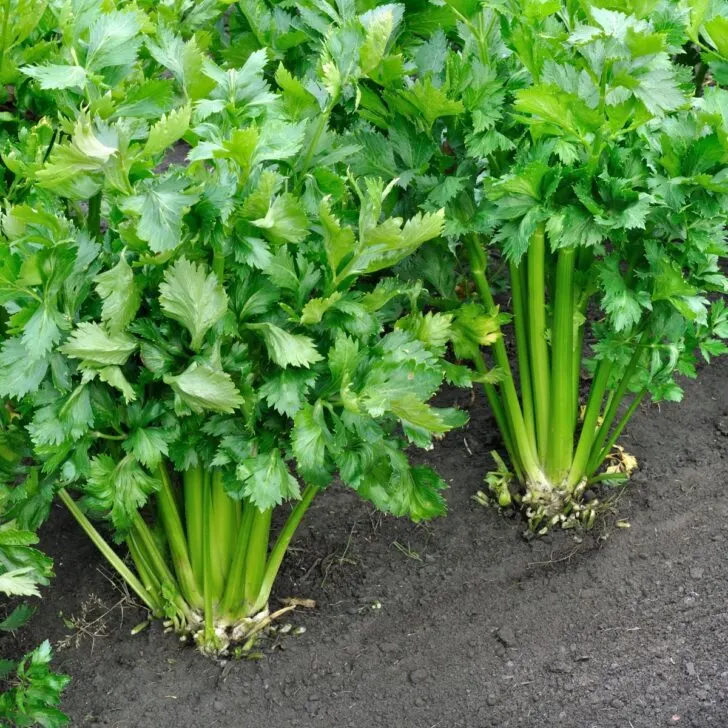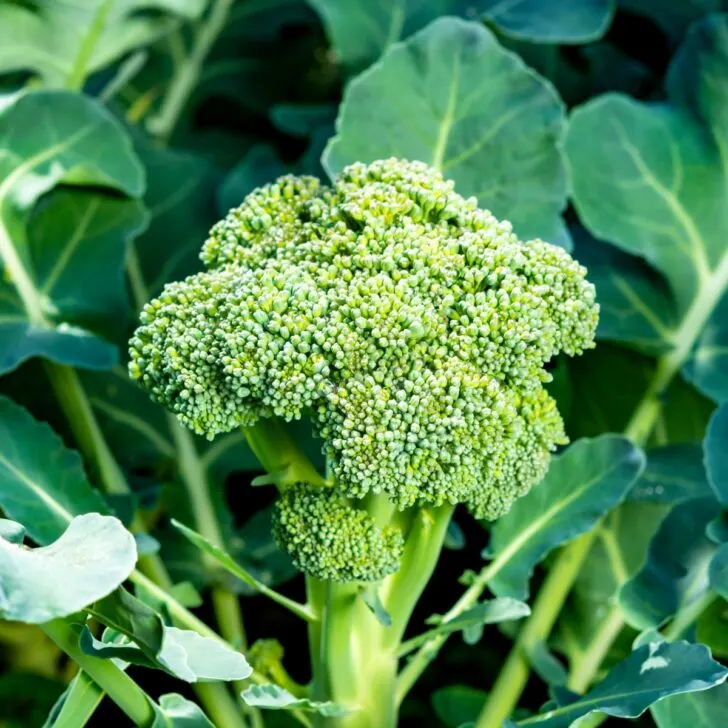Learn how to grow lettuce from seed and enjoy crisp, fresh leaves for salads and more! Get tips for sowing seeds and improving your harvest!
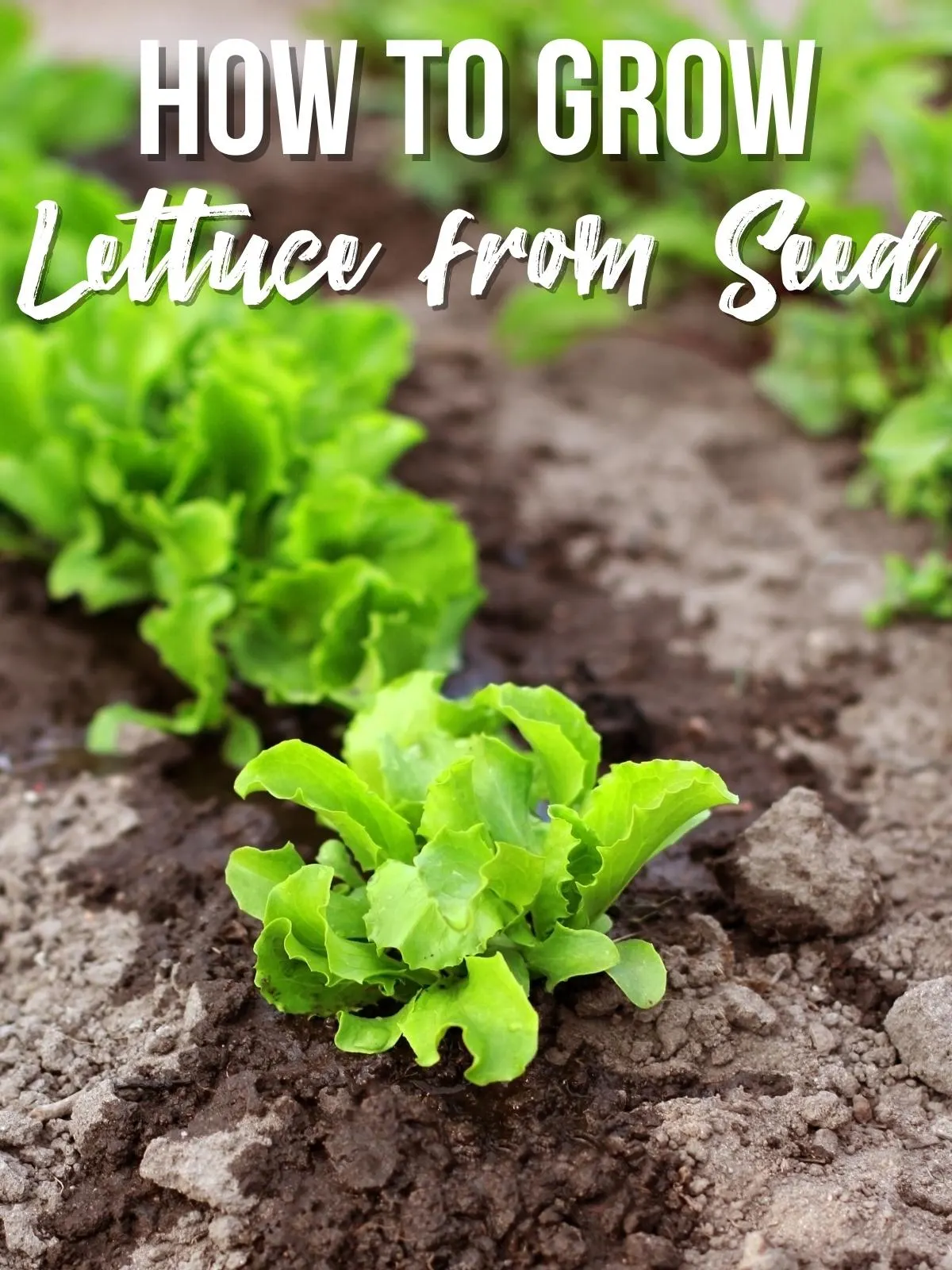
Lettuce is the building block of most salads, and it's getting expensive. A simple solution is to grow lettuce from seed at home. This fast-growing plant can grow in containers, in the ground, or even in water!
Lettuce needs plenty of bright light and thrives in the cool temperatures of fall and spring. It grows best in slightly acidic, sandy-loam soils but can also produce on less ideal ground as long as you provide sufficient nutrients.
So if you're looking for an especially easy-to-grow vegetable that takes up little garden space and can save you money at the grocery store, lettuce is it! When you grow lettuce at home from seed, you can enjoy eating unusual varieties not available at the store.
Let's get growing!
This post contains affiliate links for your convenience. Purchases made through these links may earn me a small commission at no additional cost to you.
Lettuce Varieties
Lettuce varieties include head types and loose leaf. In general, leaf lettuces are easier to grow and are perfect for those who want a quick harvest since you can start picking as soon as the leaves are large enough.
- 'Iceberg' is the classic head lettuce with pale green, crunchy, tightly packed leaves.
- 'Butterhead,' also known as Bibb or Boston lettuce, has a small, loose head structure and exceptionally succulent, bright green leaves that grow fast.
- 'Romaine' lettuce leaves grow upright and are the standard for Caesar salads.
- 'Bronze Arrow' and 'Oak Leaf' are colorful loose-leaf lettuce varieties with higher-than-average heat tolerance.
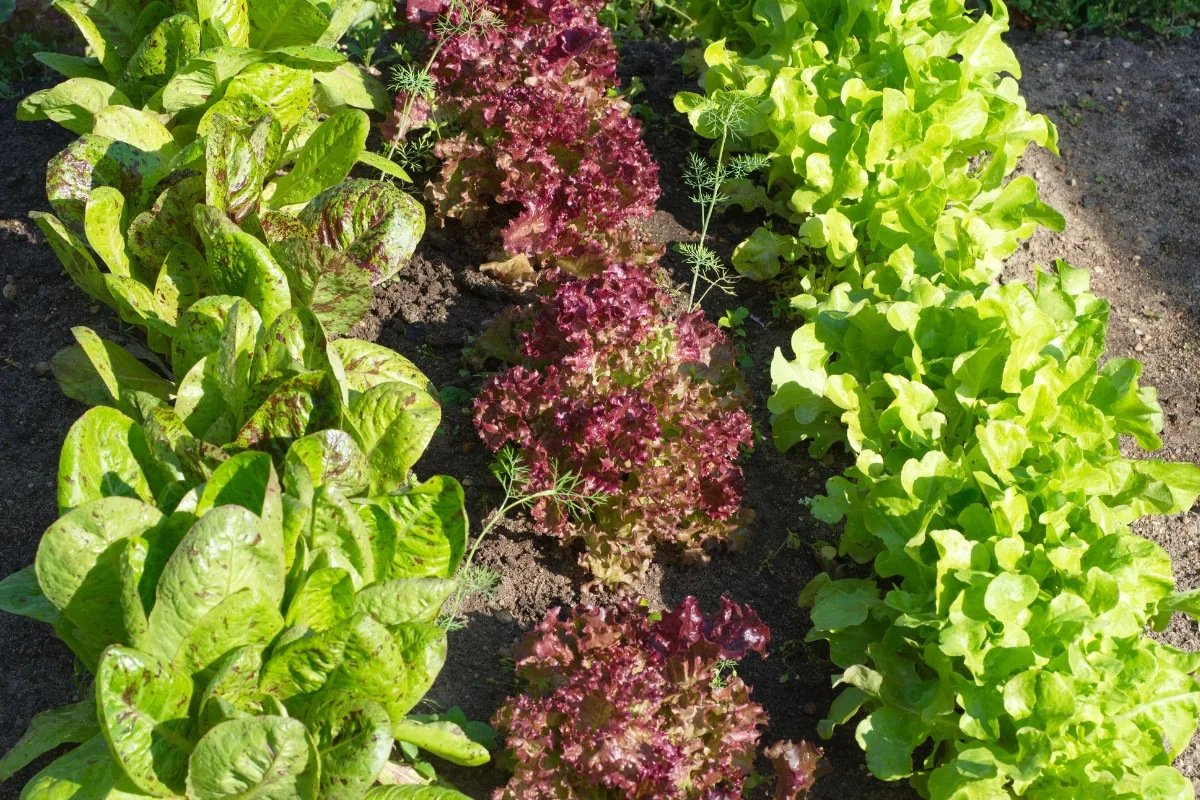
In addition, you can find mixed varieties seed packs with multiple cultivars of loose-leaf lettuce that complement each other. Consider planting several types to discover which lettuces do best in your location.
What do lettuce seeds look like?
Lettuce seeds are long and flat with pointy ends, and are typically light gray or brown.
I'm growing Merlot lettuce from seed this fall, from this free seed packet I got from Baker Creek Seeds. Here are the seeds in a white bowl so you can see what they look like.
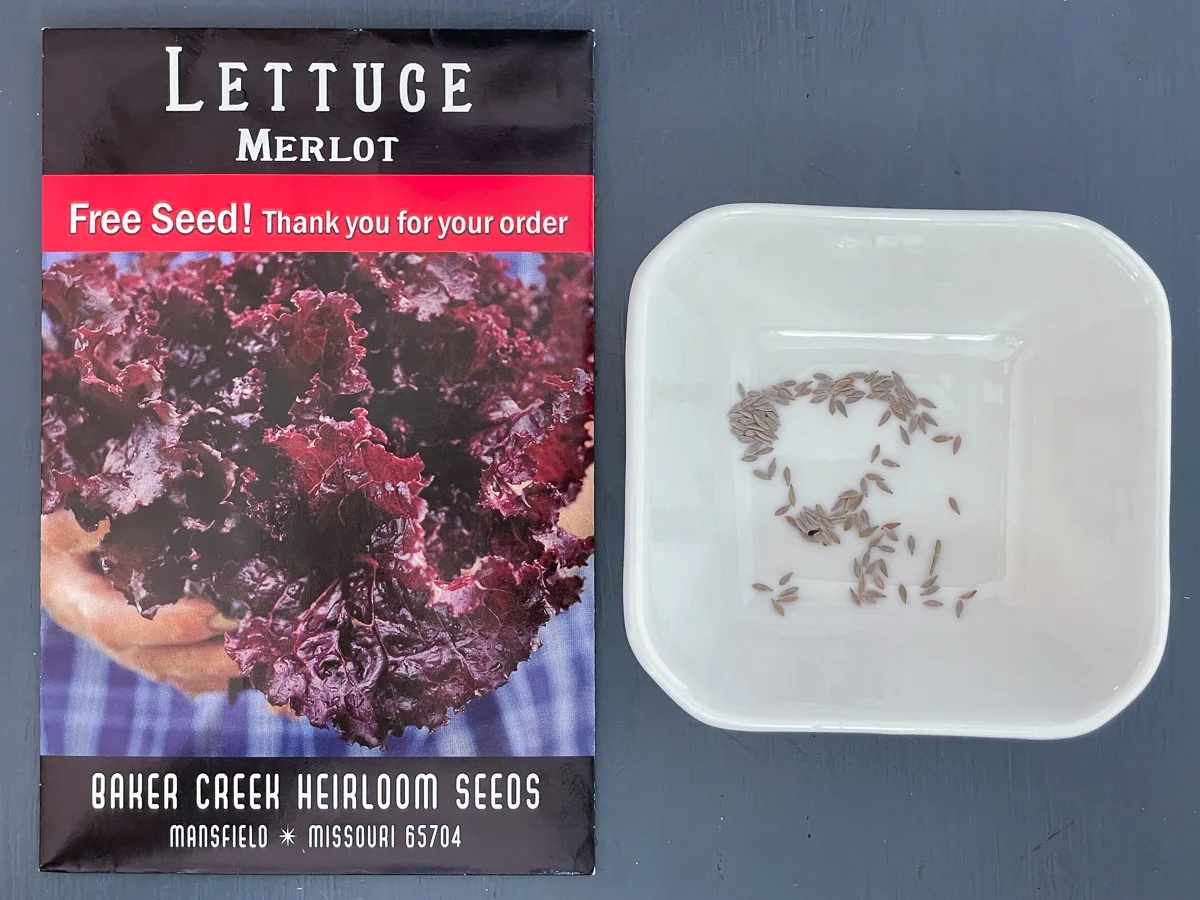
How to Plant Lettuce Seeds
It's easy to start lettuce seeds indoors or in the ground. However, transplants are less likely to become a feast for pests and hungry birds than seeds sprouting outside.
In addition, transplanting seedlings you've started indoors makes distinguishing between the lettuce seedlings and the weeds easier.
Starting Lettuce Seeds Indoors
Starting lettuce seeds indoors gives you a jump on the growing season. Sow the seeds about four weeks before the last frost date for your area and again three to four weeks later if you want to plant in succession.
Plant the seeds ⅛-1/4 inch deep and 1 to 2 inches apart in flats or seed trays filled with damp seed-starting soil mix. Barely cover the seeds because many types need light to germinate.

Keep the soil damp at a temperature below 80°F. Lettuce sprouts most readily in a temperature range of 60 to 65°F and can germinate more slowly in temperatures down to 50°F.
Direct Sowing Lettuce Outdoors
Wait until all danger of frost has passed. If you're sowing outdoors for a fall crop of lettuce, make sure you have at least 4-6 weeks before your average first frost date. I'm sowing these lettuce seeds in the beginning of September, and we typically don't get a frost until early November.
Prepare the garden bed by digging in plenty of organic matter and working the soil so it's smooth and free of rocks and lumps. If you're planting in a container, make sure it has adequate drainage.
I'm planting my lettuce seeds in grow bags filled with well-draining potting mix. This herb garden planter is perfect for small crops like this! First, I made two shallow trenches about ¼" deep with my finger in each grow bag.
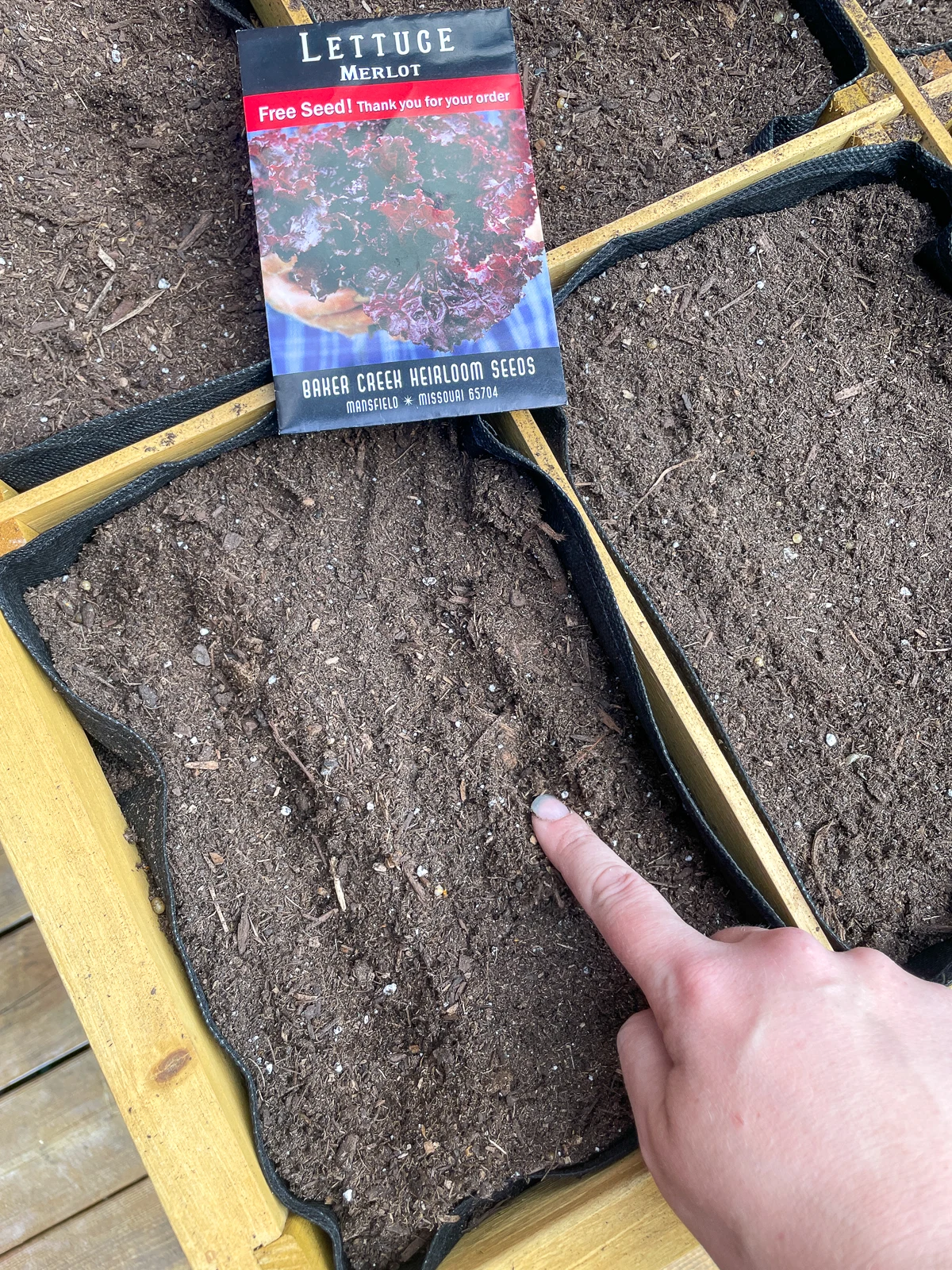
Sow the seeds in rows or lightly broadcast them on the soil surface. I just sprinkled them lightly along each trench.
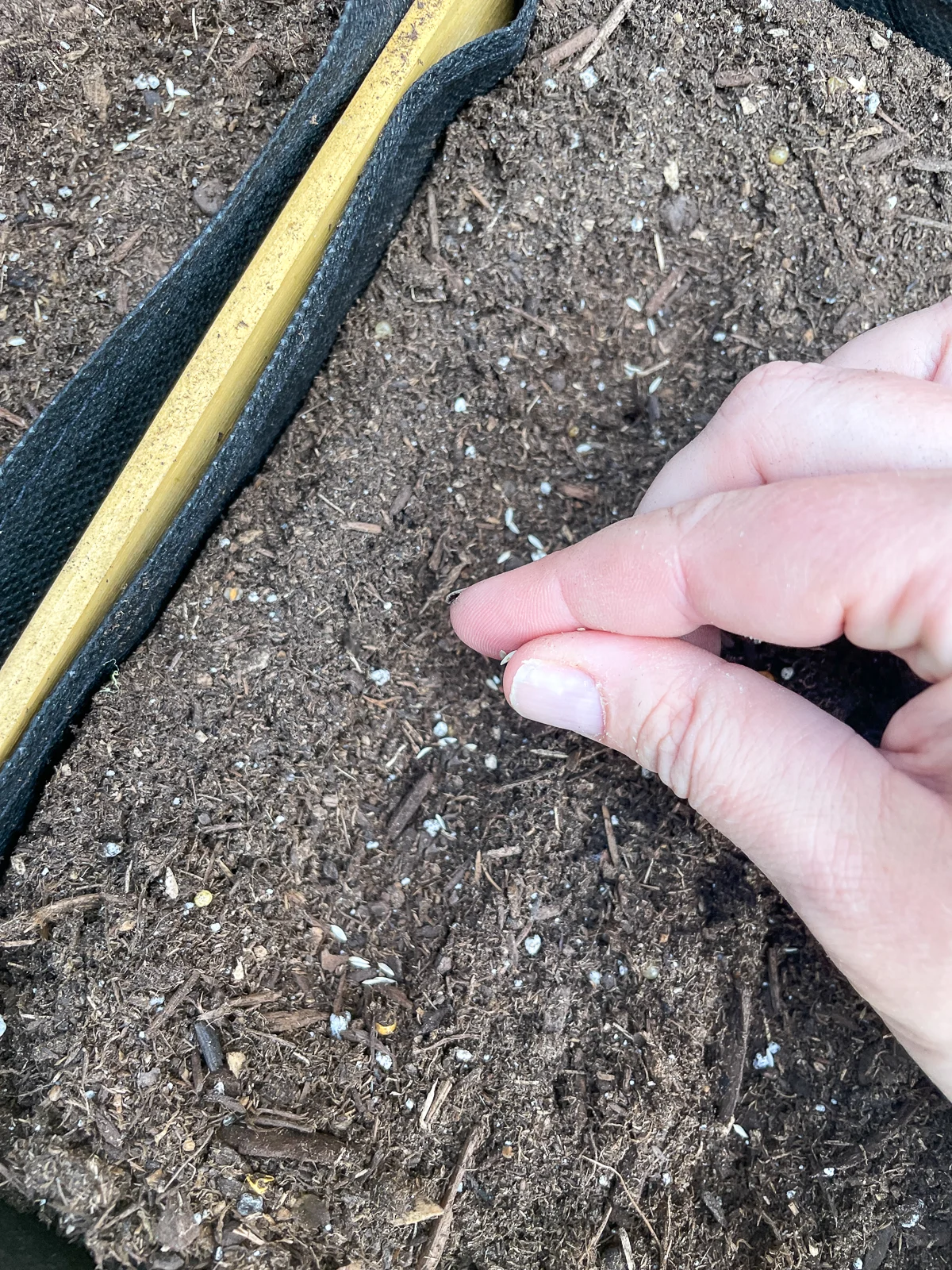
Cover the seeds lightly with soil, then water them in. Keep the soil moist at all times while the seeds germinate and for two weeks after they come up.
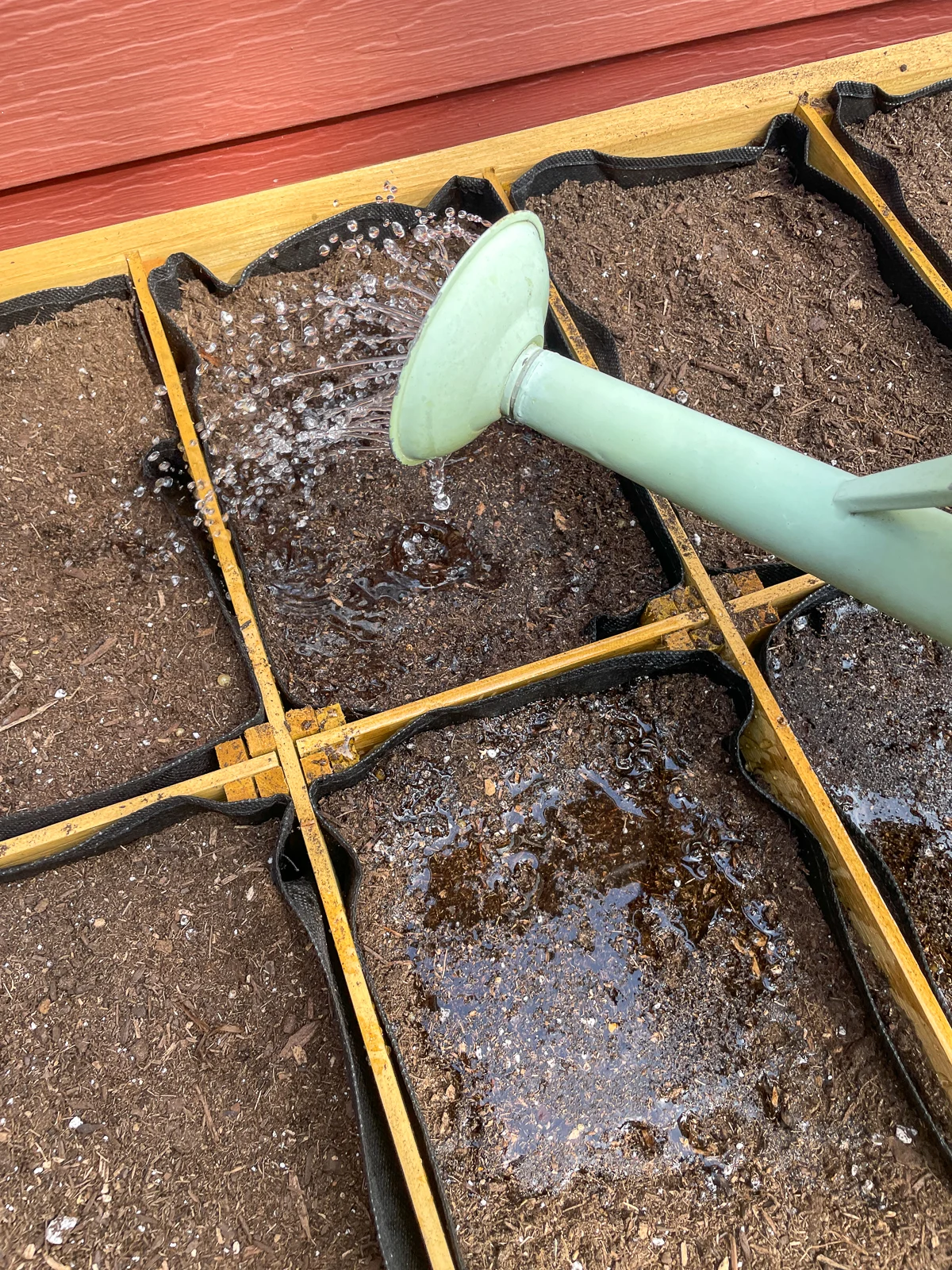
In less than a week, I had a new crop of lettuce seedlings! This dark red variety sprouts up green, then turns red as it grows.
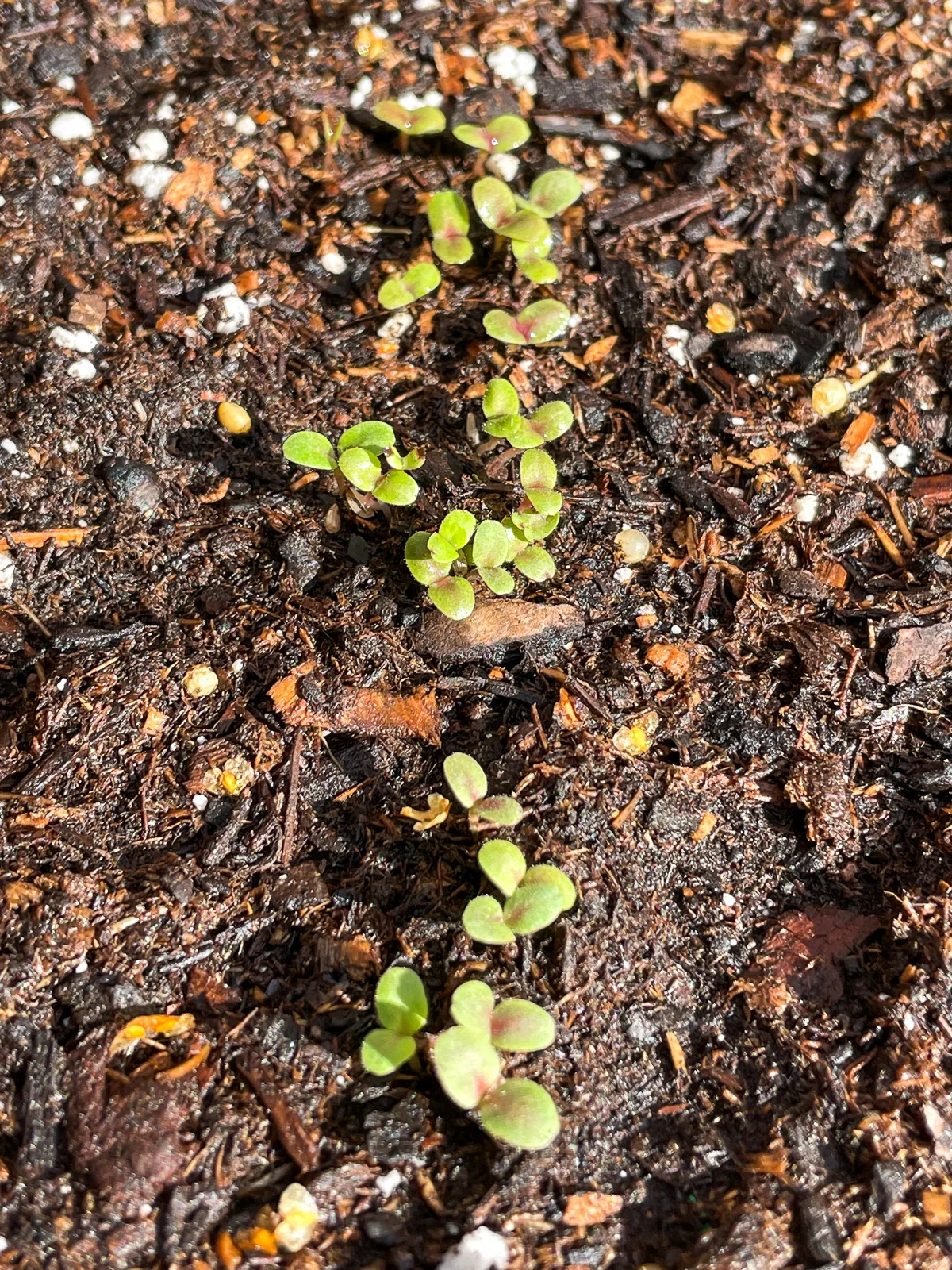
When the seedlings are a few inches tall, thin them to the correct spacing for cut-and-come-again harvests or full-grown heads. Leave them thickly planted if you prefer baby greens.
Tips for Growing Lettuce
Once your lettuce seeds have sprouted, they'll need some attention to ensure they reach their full, leafy potential.
Hardening off indoor seedlings
If you started your lettuce seeds indoors, harden off the seedlings so they don't go into shock when you plant them outside. After your last frost date has passed, take them outside during the day and bring them back inside at night for a week before transplanting them outdoors.

Spacing
If you want to harvest full-grown heads of lettuce, space the plants about 10 inches apart in rows 18 inches apart.
However, if you want to harvest lettuce without killing the plant, you can place the seedlings 3 inches apart in the rows and start gathering outer leaves from the plants when they are about 6 to 8 inches high.
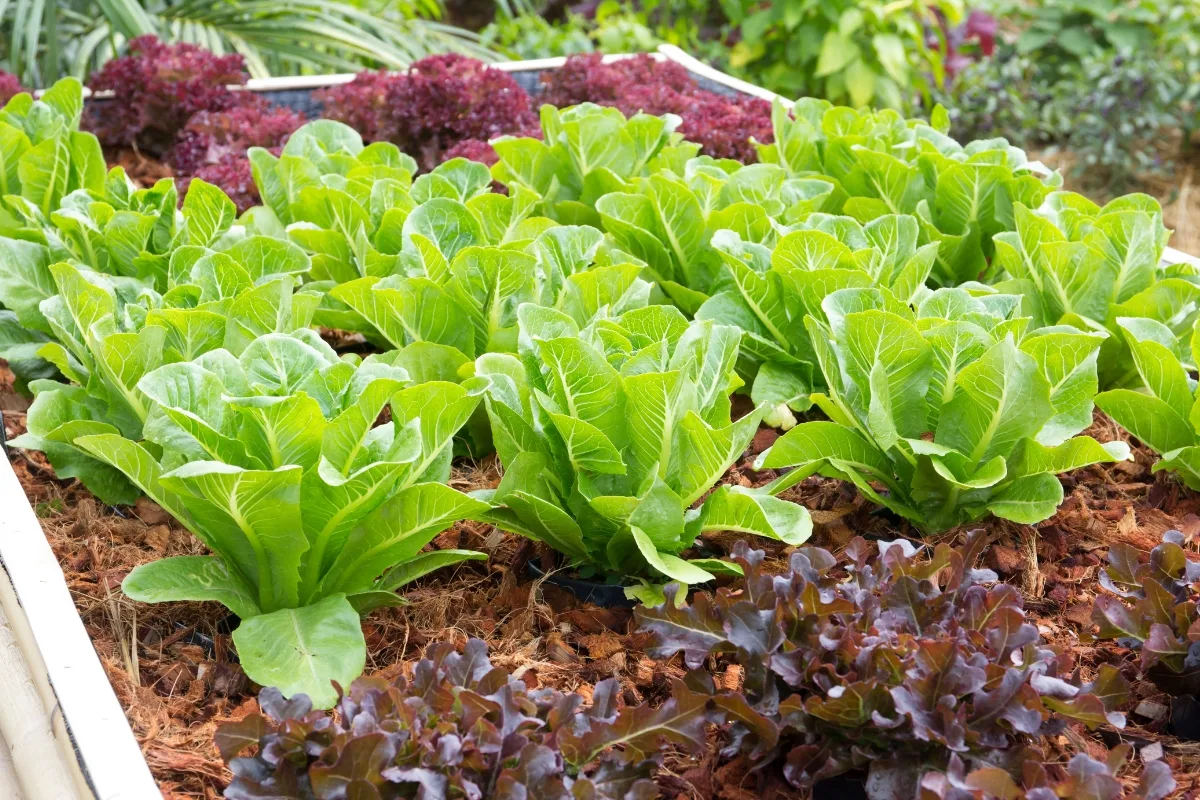
For baby lettuce, leave the plants closer together and cut them when they reach the desired size.
Watering
Lettuce loves moisture. Aim to keep the soil consistently damp, but not waterlogged. Watering in the early morning or late afternoon is best. This reduces the chance of water evaporation and gives the plants time to absorb it. A drip irrigation system with a timer can help keep your lettuce crop well watered.
Pests
Several pests and diseases can plague lettuce plants, with aphids, slugs, snails, and earwigs being common. You can wash off aphids with a jet of water from a hose.
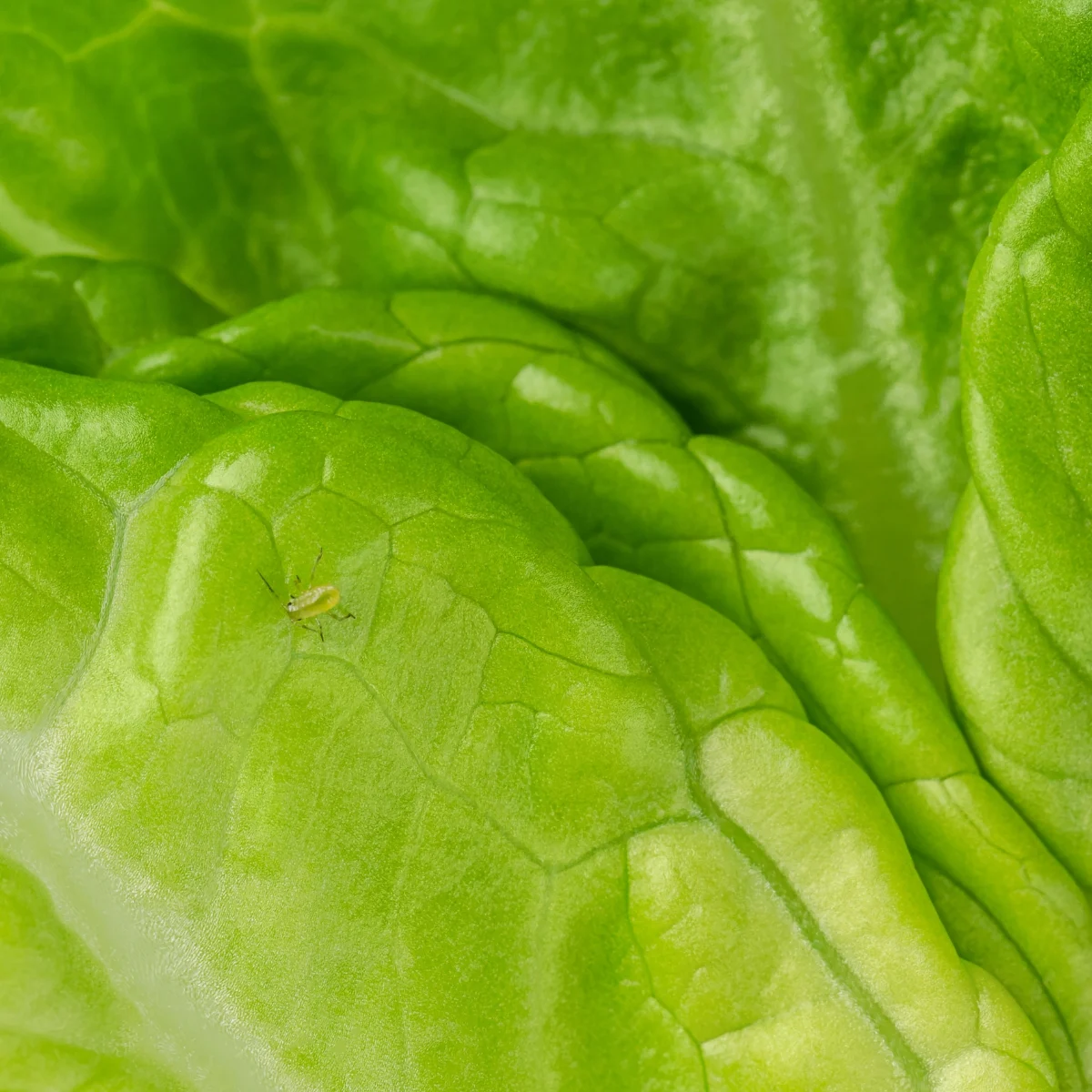
To control slugs and snails, try sprinkling diatomaceous earth around the plants or hand-picking them. Thoroughly washing the leaves in a large basin of water after harvesting is another way of removing these pests.
Harvesting
Lettuce is ready to eat in as little as 50 days, and you can continue to harvest until the plants bolt or get bitter. For this reason, many people plant lettuce in succession to extend the harvest for as long as possible.
For leaf lettuce, you can start harvesting as soon as the leaves are big enough to eat, usually around 4-6 inches tall. Use scissors or your fingers to snip off the outer leaves. This way, the plant continues to produce more without killing it.
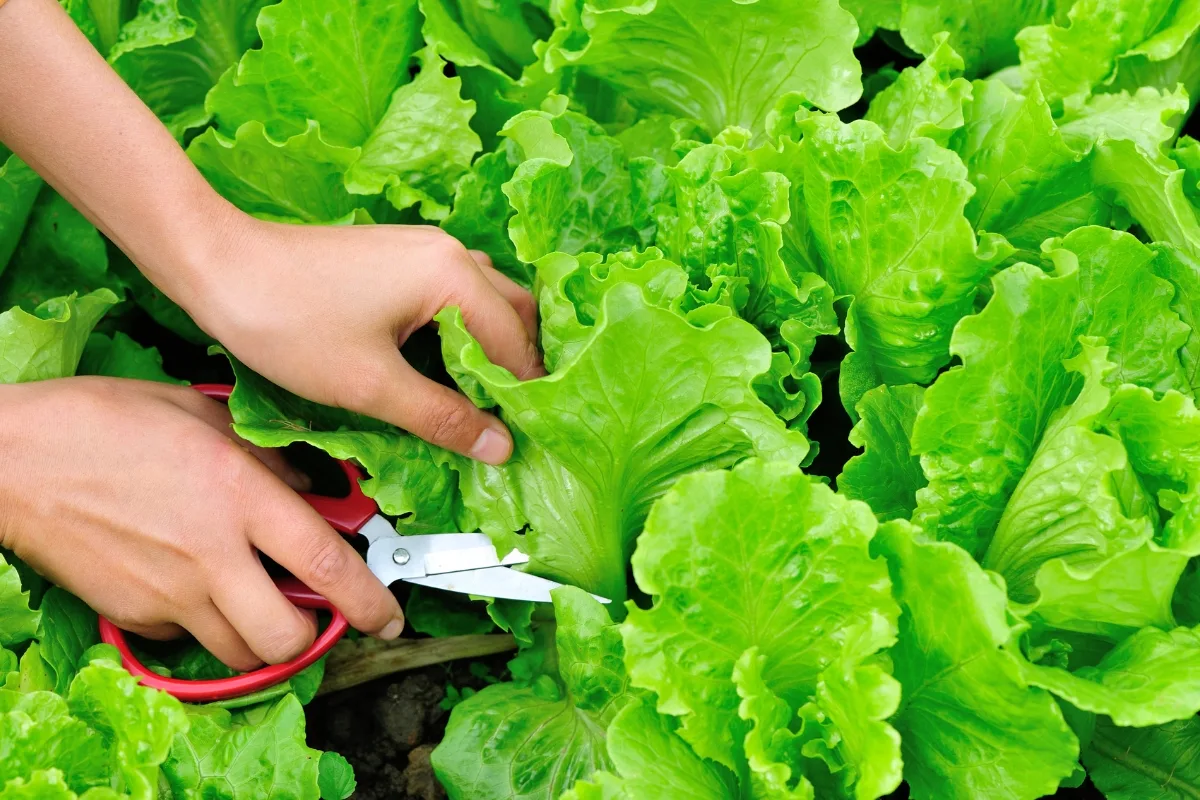
Head lettuces like iceberg or romaine are ready when they feel firm to the touch. You can harvest the entire plant at once, using a sharp knife to cut it off at the base. You can also opt to pull out the entire plant and put a new seedling in its place for a continuous harvest.
So whether you're a seasoned gardener or just want to save a few bucks on your favorite leafy greens, lettuce is an easy plant for anyone to grow from seed!
Check out these other vegetables you can grow from seed!

